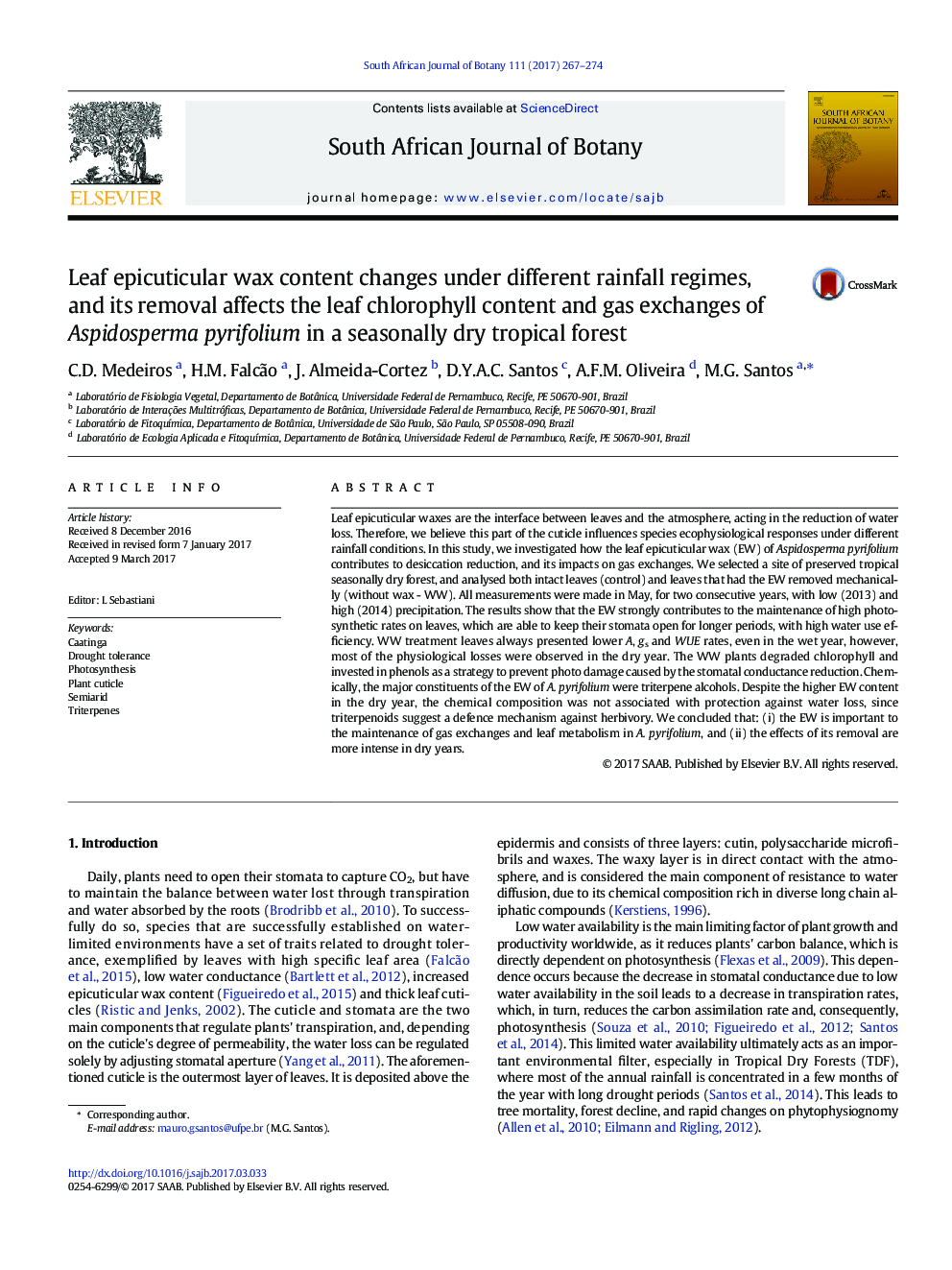| Article ID | Journal | Published Year | Pages | File Type |
|---|---|---|---|---|
| 5762969 | South African Journal of Botany | 2017 | 8 Pages |
Abstract
Leaf epicuticular waxes are the interface between leaves and the atmosphere, acting in the reduction of water loss. Therefore, we believe this part of the cuticle influences species ecophysiological responses under different rainfall conditions. In this study, we investigated how the leaf epicuticular wax (EW) of Aspidosperma pyrifolium contributes to desiccation reduction, and its impacts on gas exchanges. We selected a site of preserved tropical seasonally dry forest, and analysed both intact leaves (control) and leaves that had the EW removed mechanically (without wax - WW). All measurements were made in May, for two consecutive years, with low (2013) and high (2014) precipitation. The results show that the EW strongly contributes to the maintenance of high photosynthetic rates on leaves, which are able to keep their stomata open for longer periods, with high water use efficiency. WW treatment leaves always presented lower A, gs and WUE rates, even in the wet year, however, most of the physiological losses were observed in the dry year. The WW plants degraded chlorophyll and invested in phenols as a strategy to prevent photo damage caused by the stomatal conductance reduction. Chemically, the major constituents of the EW of A. pyrifolium were triterpene alcohols. Despite the higher EW content in the dry year, the chemical composition was not associated with protection against water loss, since triterpenoids suggest a defence mechanism against herbivory. We concluded that: (i) the EW is important to the maintenance of gas exchanges and leaf metabolism in A. pyrifolium, and (ii) the effects of its removal are more intense in dry years.
Related Topics
Life Sciences
Agricultural and Biological Sciences
Agronomy and Crop Science
Authors
C.D. Medeiros, H.M. Falcão, J. Almeida-Cortez, D.Y.A.C. Santos, A.F.M. Oliveira, M.G. Santos,
